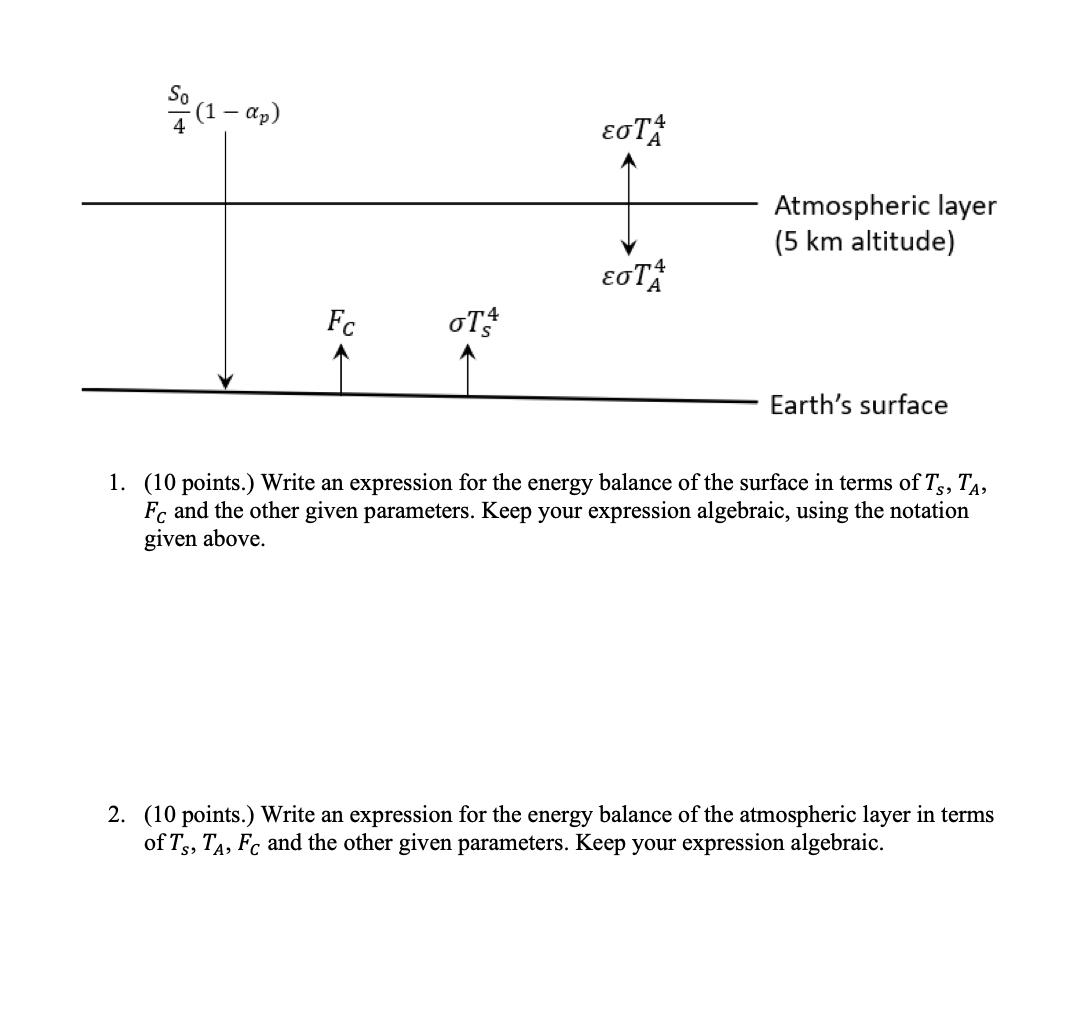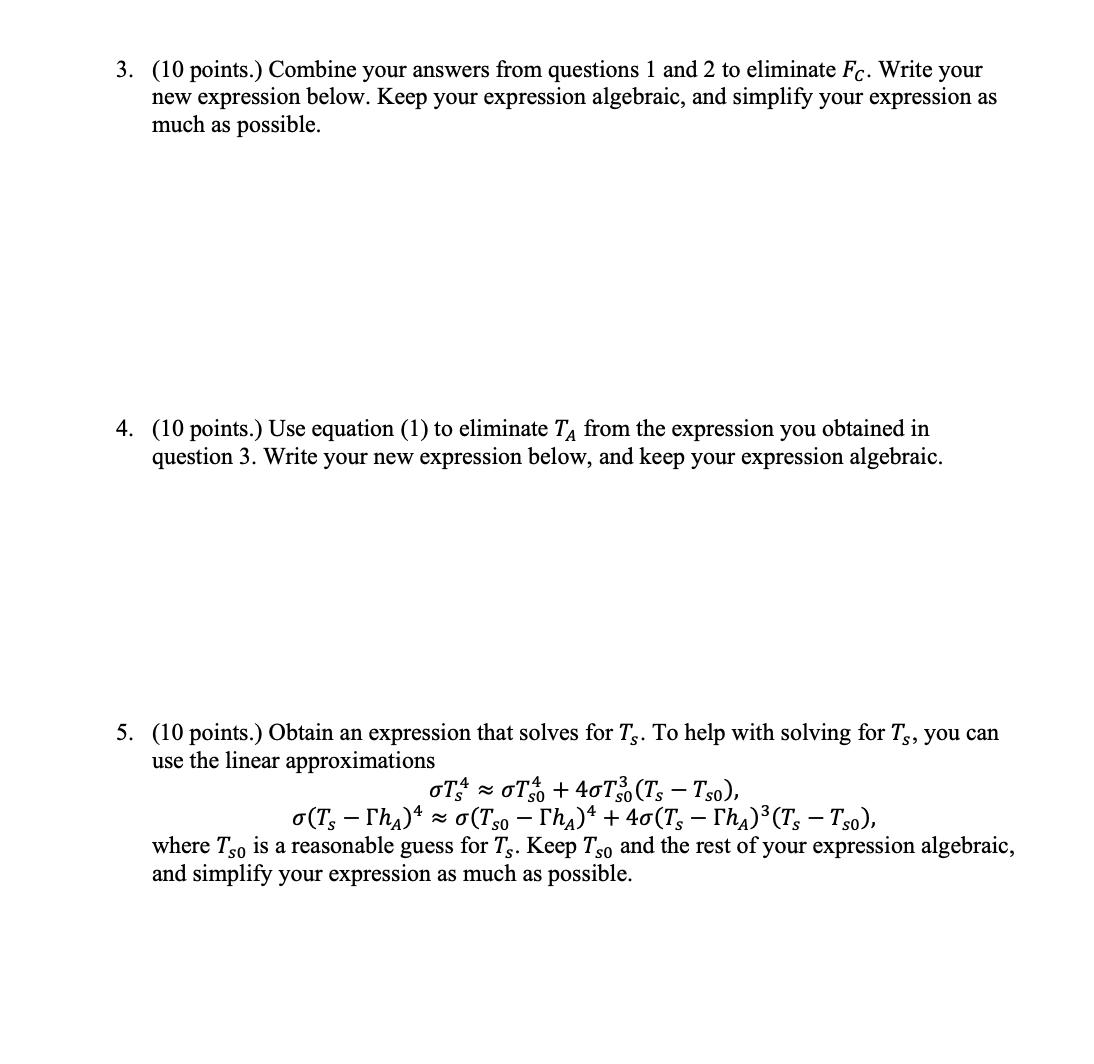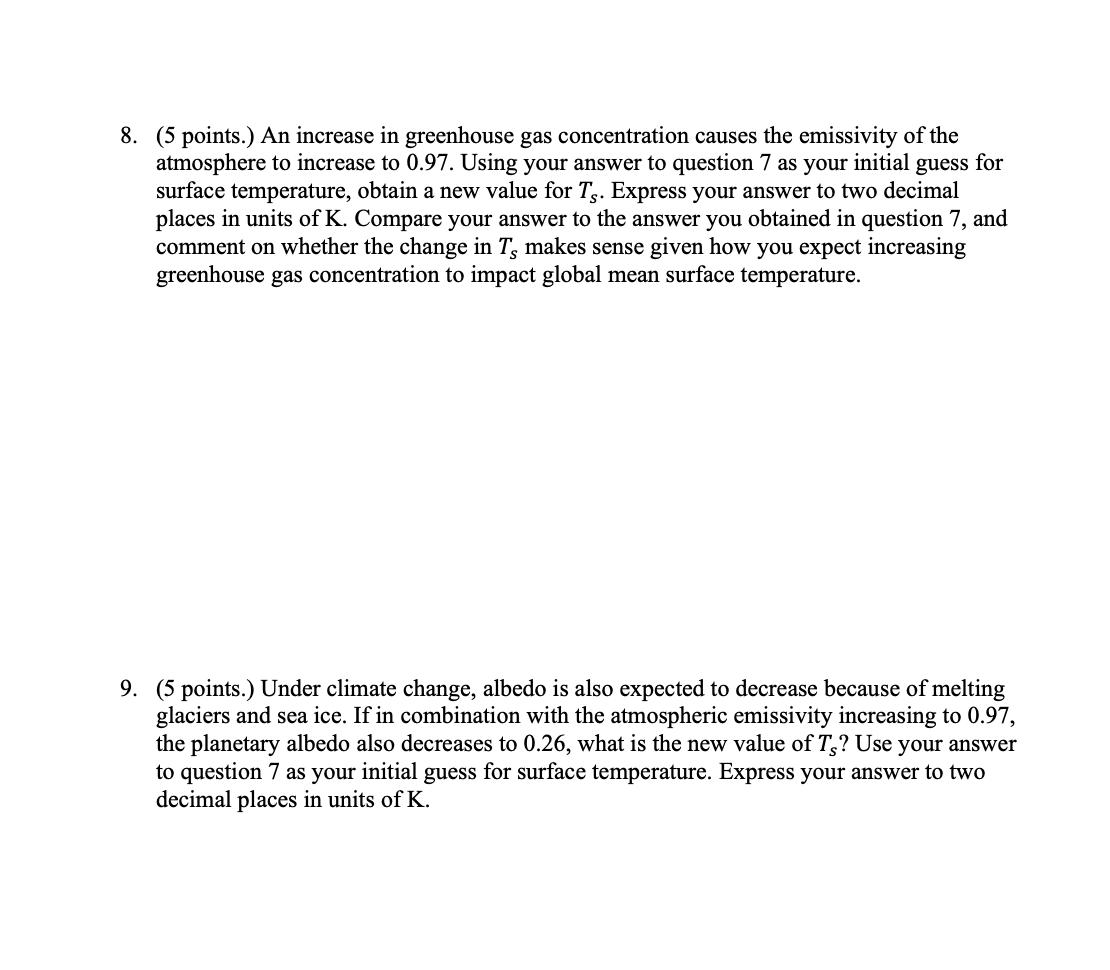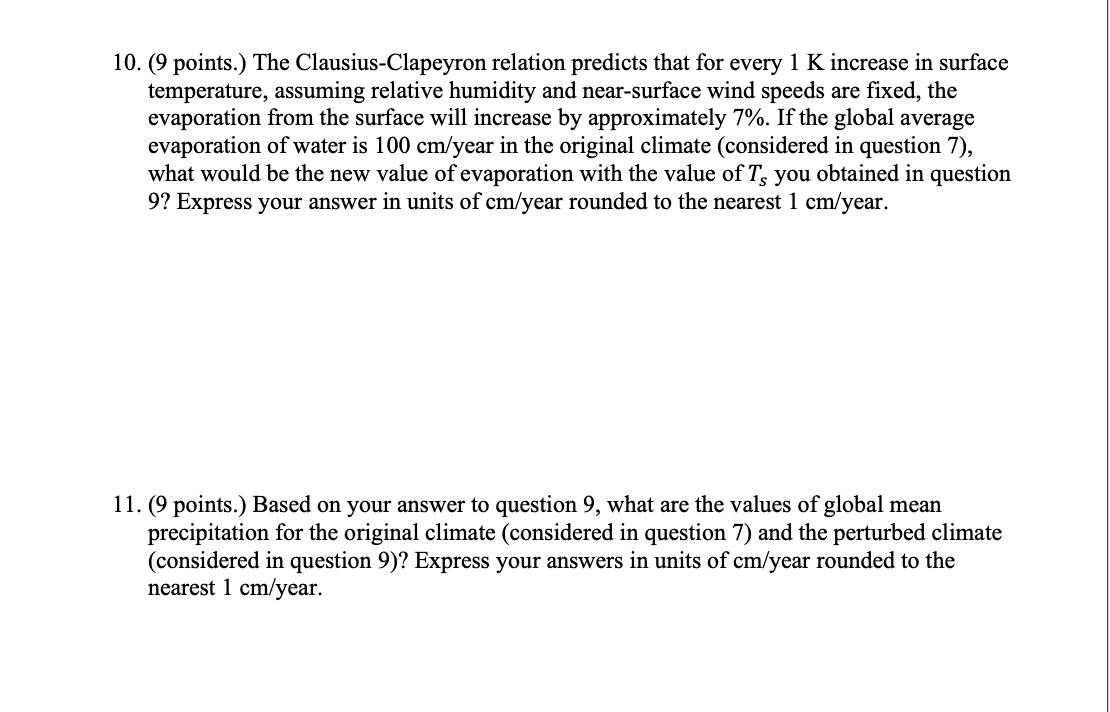Answered step by step
Verified Expert Solution
Question
1 Approved Answer
Attempt to model the effect of increasing greenhouse gas concentration in Earth s atmosphere using a simplified model as in the figure below. In







Attempt to model the effect of increasing greenhouse gas concentration in Earth s atmosphere using a simplified model as in the figure below. In this model, there is a single atmospheric layer at h = 5 km altitude with temperature, TA, and known longwave emissivity, &. The surface is a perfect blackbody with temperature, Ts. The atmospheric layer, however, is not a perfect blackbody: a portion of the longwave emission from the surface, (1 - )oT, escapes directly to space, and the remainder (oT) is absorbed by the atmospheric layer. The atmospheric layer is assumed to be completely transparent to solar radiation. In addition to these radiative processes, the surface also cools through convection with a convective flux, Fe, which acts to warm the atmospheric layer and maintain an atmospheric lapse rate of T = 6.5 K km-. Thus, T, and TA are constrained to satisfy TS-TA hA = r. (1) The solar constant is So=1362 W m-2, the Stefan-Boltzmann constant is o = 5.67 10-8 W m-2K-4, the planetary albedo is taken to be ap = 0.27 and the emissivity of the atmospheric layer is taken to be = : 0.93. For all questions below, assume that the Earth system is in a steady-state, which implies that the Earth system is in thermal equilibrium. - p) Fc OTS EOTA Atmospheric layer (5 km altitude) Earth s surface 1. (10 points.) Write an expression for the energy balance of the surface in terms of Ts, TA, Fc and the other given parameters. Keep your expression algebraic, using the notation given above. 2. (10 points.) Write an expression for the energy balance of the atmospheric layer in terms of TS, TA, Fc and the other given parameters. Keep your expression algebraic. 3. (10 points.) Combine your answers from questions 1 and 2 to eliminate Fc. Write your new expression below. Keep your expression algebraic, and simplify your expression as much as possible. 4. (10 points.) Use equation (1) to eliminate TA from the expression you obtained in question 3. Write your new expression below, and keep your expression algebraic. 5. (10 points.) Obtain an expression that solves for Ts. To help with solving for Ts, you can use the linear approximations OTOT +40T30 (Ts - Tso), o(Ts - Tha) 4 o(Tso - Th) 4 + 40 (Ts - Th)(Ts - Tso), where Tso is a reasonable guess for Ts. Keep Tso and the rest of your expression algebraic, and simplify your sion as much as possible. 6. (5 points.) Using the given parameter values, determine a numerical value for Ts. Use the freezing temperature for water as your initial guess for the surface temperature (Tso = 273.15 K). Express your answer to two decimal places in units of K. 7. (5 points.) Use your result from question 6 as a new guess for surface temperature, and obtain a better estimate for Ts. Express your answer to two decimal places in units of K. This approach is closer to how numerical models actually calculate temperature: a complicated equation is linearized and then solved iteratively until the guess and the answer are nearly the same. 8. (5 points.) An increase in greenhouse gas concentration causes the emissivity of the atmosphere to increase to 0.97. Using your answer to question 7 as your initial guess for surface temperature, obtain a new value for Ts. Express your answer to two decimal places in units of K. Compare your answer to the answer you obtained in question 7, and comment on whether the change in T, makes sense given how you expect increasing greenhouse gas concentration to impact global mean surface temperature. 9. (5 points.) Under climate change, albedo is also expected to decrease because of melting glaciers and sea ice. If in combination with the atmospheric emissivity increasing to 0.97, the planetary albedo also decreases to 0.26, what is the new value of Ts? Use your answer to question 7 as your initial guess for surface temperature. Express your answer to two decimal places in units of K. 10. (9 points.) The Clausius-Clapeyron relation predicts that for every 1 K increase in surface temperature, assuming relative humidity and near-surface wind speeds are fixed, the evaporation from the surface will increase by approximately 7%. If the global average evaporation of water is 100 cm/year in the original climate (considered in question 7), what would be the new value of evaporation with the value of T, you obtained in question 9? Express your answer in units of cm/year rounded to the nearest 1 cm/year. 11. (9 points.) Based on your answer to question 9, what are the values of global mean precipitation for the original climate (considered in question 7) and the perturbed climate (considered in question 9)? Express your answers in units of cm/year rounded to the nearest 1 cm/year. 12. (12 points.) Assume that the global mean changes in temperature and precipitation found above are applicable to Toronto. How would these changes influence the rate of physical weathering of the Toronto sidewalk pictured below? Would the rate of physical weathering be affected by changes in other types of weathering (i.e. biological and chemical weathering)? If so how? (Picture from CBC News.)
Step by Step Solution
★★★★★
3.42 Rating (165 Votes )
There are 3 Steps involved in it
Step: 1

Get Instant Access to Expert-Tailored Solutions
See step-by-step solutions with expert insights and AI powered tools for academic success
Step: 2

Step: 3

Ace Your Homework with AI
Get the answers you need in no time with our AI-driven, step-by-step assistance
Get Started


